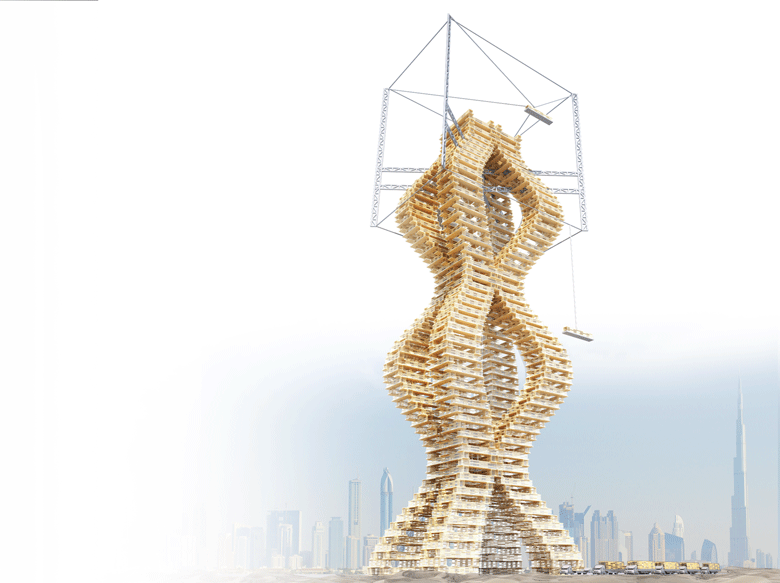

Architectural practice Mamou-Mani’s award-winning, tower-building Polibot robot epitomises machine learning at the margins of current artificial intelligence (AI). In January 2017, the firm won a design competition hosted by UK design consultant Arup to use AI to create a machine that could transform construction sites. The initial solution to this was a robot that combines known AI technology but also brings in machine learning, enabling it to self-monitor and self-correct.
Traditional AI relies on what Arup associate Alvise Simondetti describes as an excruciatingly long list of commands that dictate the actions required from a simple robot. The robot has no appreciation of its environment, or ability to learn from its actions. But the recent revolution in processing power is enabling machines to analyse huge volumes of newly available data, and compare this information about its environment to design criteria and thousands, if not millions, of data sets.
Digital model

This ability to self-monitor is what makes the Polibot intelligent. Added to this is its ability to use design criteria from the digital model, rather than rely on a mathematic script-based code created by programmers. This step is described by designers as the ‘democratisation’ of robotics.
During operation, the model data is used to tell the robot which segments to lift, and where to place them, to create a tower. So far traditional AI, but what pushes the boundaries is that the machine then uses a Microsoft Kinect camera mounted overhead to assess and analyse the position of the segment on the lifting mechanism, and self-correct if it is out of alignment. This feedback loop is the first non-deterministic element of the robot, taking steps along the path to the development of fully learned machines.
Blockchain skyscraper
Physically, the Polibot is a simple structure. A central operating system is hosted in a small box attached to the pick-and-place mechanisms, which is suspended from eight cables that use eight winches to move and position the head. The initial prototype is designed for payloads of up to 2 kilogrammes and can build any structure that falls within a 4m-by-4m footprint. However, the team says the machine is scalable and, with larger motors and winch systems, could be used to construct larger structures such as the innovative 600m-high Blockchain Skyscraper designed by Mamou-Mani.
But for now, the firm is focusing on a multi-functional version of the cable robot under a Kickstarter campaign called the Polibot, Universal Building Machine. Prototypes of the machine, which incorporates 3D printing, CNC milling and pick-and-place technologies, are already being tested and the firm argues that these could ultimately replace tower cranes and labourers as fully intelligent site construction robots.
[caption id="attachment_326949" align="aligncenter" width="659"] A rendering of one of the thousands of potential iterations of a timber tower built by the Polibot [/caption]
A rendering of one of the thousands of potential iterations of a timber tower built by the Polibot [/caption]
This would require the machine to host millions of data sets that inform its approach to delivering the model-led design, and the more data it has the smarter it becomes. This would be coupled with sensors and cameras to provide real-time environmental information. The launch of this machine is planned for later this year.
This article was originally published in MEED Mashreq Construction Report Vol 3: Delivering Innovation in Construction, in April 2018.

This article is extracted from a report produced by MEED and Mashreq titled Delivering Innovation in Construction. Click here to download the report
You might also like...

Iraq signs deal to develop the Akkas gas field
25 April 2024

Emaar appoints beachfront project contractor
25 April 2024

Acwa Power signs $356m Barka extension
25 April 2024

AD Ports secures Angola port concession agreement
25 April 2024
A MEED Subscription...
Subscribe or upgrade your current MEED.com package to support your strategic planning with the MENA region’s best source of business information. Proceed to our online shop below to find out more about the features in each package.




